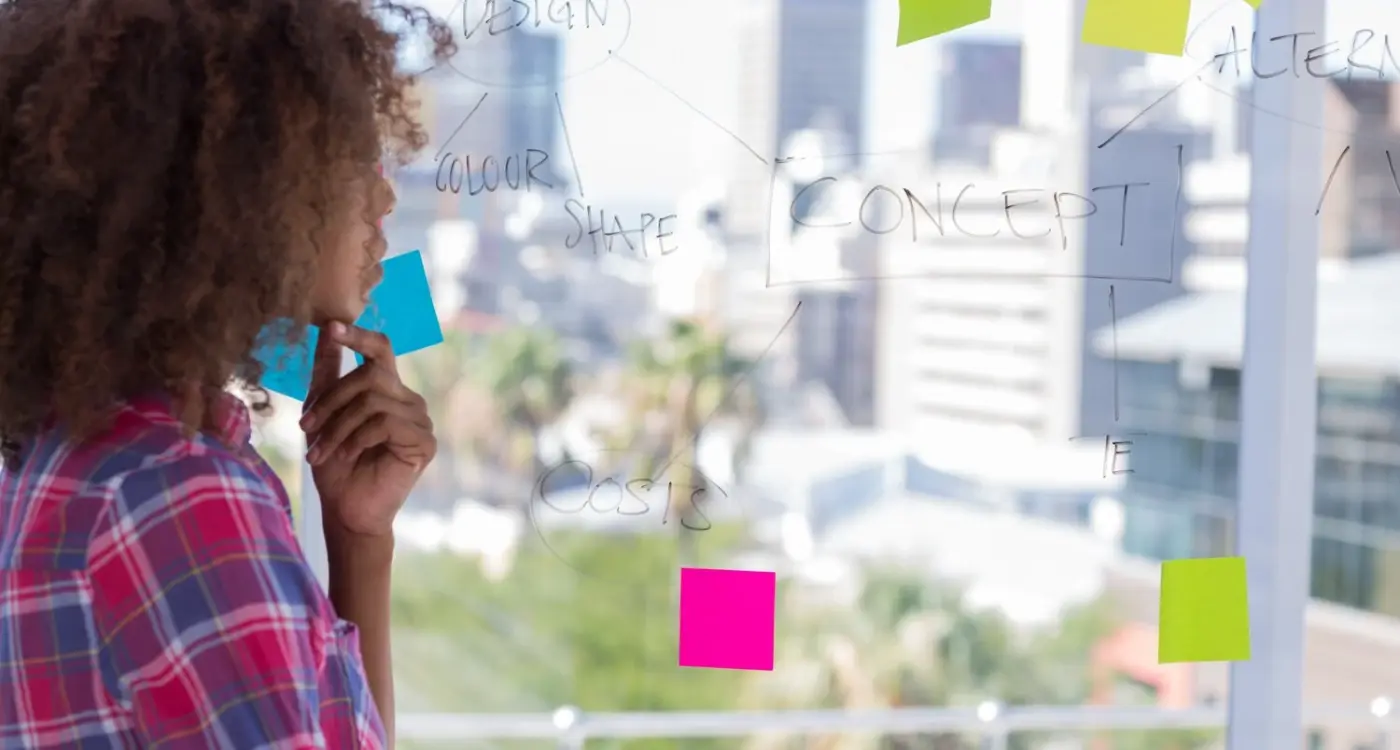What Features Should My First App Have?
Over 90% of first-time app creators include features that nobody actually uses. That's a crazy number when you think about it—all that time, money, and effort poured into building things people simply don't want or need. The temptation to pack your first app with every bell and whistle imaginable is strong, but it's also one of the fastest ways to create something that feels overwhelming and confusing.
Building your first app is exciting, nerve-wracking, and frankly, a bit overwhelming. You've got this brilliant idea bouncing around in your head, but when it comes to deciding what essential app features to actually include, things get complicated quickly. Should you add social sharing? What about push notifications? Do you need user accounts from day one? The list of possibilities feels endless.
The best first apps solve one problem really well, rather than trying to solve ten problems poorly
This guide will walk you through the basic app functionality that actually matters for your first release. We'll explore how to identify your app's core purpose, what features are genuinely needed versus nice-to-have, and how to create a first app feature list that sets you up for success rather than disappointment. By the end, you'll have a clear roadmap for building something people will actually want to use—and that's the whole point, isn't it?
Understanding Your App's Core Purpose
Right, let's get straight to the point—before you even think about fancy buttons or cool animations, you need to know exactly what your app is meant to do. I mean really know it. Not just "it helps people" or "it makes things easier" but the proper, specific reason why someone would download your app instead of the thousands of others already available.
Start With the Why
When I meet new clients, the first question I ask isn't about their budget or timeline—it's about their why. Why does this app need to exist? What problem are you solving that nobody else is solving, or what are you doing differently? If you can't answer this in one clear sentence, you're not ready to start building anything yet. Trust me on this one.
Keep It Simple
Your core purpose should be something a nine-year-old could understand. If it takes you five minutes to explain what your app does, you've already lost most people. The best apps do one thing really well rather than lots of things poorly. WhatsApp sends messages. Uber gets you rides. Spotify plays music. See the pattern? Once you nail down this single core purpose, every feature decision becomes much easier—does this feature support your main goal or doesn't it? Understanding why app developers are moving away from feature stuffing can help you maintain this focused approach.
User Registration and Login Systems
Here's something that might surprise you—not every app needs a user registration system. I know that sounds crazy, but hear me out. Many first-time app builders think they need to collect user details straight away, but sometimes this just puts people off before they've even tried your app.
Think about it from a user's perspective. They've just downloaded your app and want to see what it does. The last thing they want is to fill out forms and create passwords. If your app works perfectly well without knowing who someone is, then don't ask for their details yet.
When You Actually Need Registration
You'll need user accounts when your app saves personal information, connects people together, or offers personalised content. Social apps, fitness trackers, and shopping apps all need to know who's using them. Weather apps and calculators? Not so much.
Let people use your app as a guest first, then ask them to register when they want to save something or unlock extra features. This way they already see the value before you ask for their information. The approach may also differ depending on whether you're building for business or consumer users, as business and consumer apps have different security and functionality requirements.
Content Display and Navigation
Getting your content display right is where many first-time app creators stumble—and I've seen it happen more times than I care to count. You might have brilliant content, but if people can't find it or understand how to move around your app, they'll delete it faster than you can say "user experience". The golden rule here is simple: make everything obvious. If someone opens your app and has to think about where to tap next, you've already lost them.
Keep Your Menu Structure Simple
Start with no more than five main sections in your navigation. Any more than that and people get overwhelmed—trust me on this one. Use clear labels that tell people exactly what they'll find when they tap. "Settings" is better than a gear icon; "My Orders" beats "History" every time. Bottom navigation works brilliantly for most apps because that's where people's thumbs naturally rest.
Make Your Content Scannable
People don't read on mobile; they scan. Break up your text with plenty of white space, use bullet points where you can, and keep paragraphs short. Loading times matter too—if your images take forever to appear, people will assume your app is broken. Compress those images and test everything on a slower internet connection before you launch.
User Interaction and Engagement
Getting people to download your app is one thing—keeping them coming back is another beast entirely. I've watched brilliant apps fail because they forgot this simple truth: users need a reason to stick around. Your basic app functionality should include ways for people to interact with your content and feel connected to your app.
Start with the fundamentals. Push notifications are probably the most powerful engagement tool you have, but use them wisely—nobody wants their phone buzzing every five minutes. Understanding proper notification etiquette and timing can make the difference between helpful reminders and annoying spam. Social sharing buttons let users spread the word about your app naturally. Comments, likes, or rating systems give people a voice and make them feel heard.
Simple Ways to Keep Users Active
Think about adding a favourites feature so users can save things they love. A simple search function helps people find what they're looking for quickly. Basic personalisation—like remembering user preferences—goes a long way.
The best apps make users feel like they're part of something bigger, not just consuming content
Don't overcomplicate things for your first app. Pick two or three engagement features that make sense for your core purpose. A fitness app might need progress tracking; a recipe app might need a shopping list feature. Focus on what your users actually need, not what sounds impressive on paper.
Data Management and Storage
Here's something that might surprise you—most first-time app builders worry about the wrong things when it comes to data. They get caught up in complex databases and cloud storage solutions before they've even figured out what information their app actually needs to store. I've seen this happen countless times, and it usually leads to overengineered solutions that cost more money and take longer to build.
Let's start with the basics. Your app will need to handle two main types of data: user data (like profiles, preferences, and content they create) and app data (like settings, cached images, and temporary files). The key question isn't which storage solution is the fanciest—it's which one matches your app's actual requirements.
Keep It Simple
My advice? Start small and grow as needed. A simple database solution that handles your core features properly is infinitely better than a complex system that breaks under pressure. You can always upgrade your storage as your user base grows—but you can't easily fix a poor user experience caused by overcomplicated data management. If you're working with a tight budget, there are strategic ways to reduce development costs without compromising essential functionality.
Performance and Technical Requirements
Right, let's talk about the stuff that happens behind the scenes—the technical bits that make your app actually work. I know this might sound boring compared to all those exciting basic app functionality features we've been discussing, but trust me, get this wrong and your beautiful app becomes a frustrating mess that people delete faster than you can say "one star review".
Your first app needs to load quickly. Really quickly. We're talking about getting your main screen to appear within two to three seconds max. People these days have the attention span of a goldfish when it comes to waiting for apps to load. If your app takes forever to start up, they'll assume it's broken and move on to something else.
Core Technical Features Your App Must Have
Battery life is another big one. Your app shouldn't drain someone's phone battery like it's trying to power a small village. Keep background activity to a minimum and only use location services when you really need them.
Test your app on an older phone with a dodgy internet connection—that's where you'll discover if your essential app features actually work in real-world conditions. These technical considerations are part of what separates good apps from truly exceptional ones.
Testing Your Feature Decisions
You've made all these decisions about what features to include in your first app—but how do you know if they're actually any good? Testing is where the rubber meets the road, and I can't stress enough how many apps I've seen fail because developers skipped this step entirely.
The simplest way to test your feature ideas is to create mockups or wireframes and show them to real people. Not your mum, not your best mate who always says everything looks brilliant—actual strangers who fit your target audience. You'll be amazed at what people struggle with that seems obvious to you.
Quick Testing Methods
The key is to test early and test often. Don't wait until your app is finished—by then it's too expensive to make major changes. I've learned this the hard way more times than I care to admit! Watch how people actually use your app rather than listening to what they say they want. People are terrible at predicting their own behaviour, but brilliant at showing you what actually works through their actions.
Conclusion
Building your first app doesn't need to be overwhelming—but it does need to be thoughtful. After working with hundreds of first-time app creators, I can tell you that the ones who succeed are those who resist the urge to cram every possible feature into version one. They focus on solving one problem really well rather than solving ten problems poorly.
Your essential app features should always serve your core purpose; everything else is just noise. Start with rock-solid user registration and login systems, make sure your content displays clearly and navigation makes sense, then add the interaction features that keep people coming back. Don't forget the boring stuff—data management and performance requirements—because users will abandon a slow or buggy app faster than you can say "one-star review".
The basic app functionality you choose today isn't set in stone. Apps evolve, and so will yours. But getting your first app feature list right means you'll have a strong foundation to build on. Test your decisions with real users, listen to their feedback, and be prepared to adjust. Remember, even the biggest apps started with a simple idea and a small set of features that worked brilliantly together.
Share this
Subscribe To Our Learning Centre
You May Also Like
These Related Guides

How Do I Build Features Users Will Want in Three Years?

How Long Does Enterprise App Development Typically Take?



